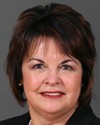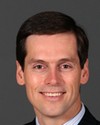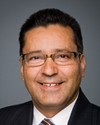Thank you, Mr. Chairman and members of the committee.
I am pleased to be here today to discuss nuclear regulation in Canada and the mandate of the Canadian Nuclear Safety Commission.
I've prepared short opening remarks. I understand they've been distributed.
Accompanying me this afternoon is Dr. Patsy Thompson, our director general of environmental and radiation protection and assessment.
Mr. Chairman, I would like to start by explaining the role and responsibilities of the Canadian Nuclear Safety Commission.
Simply stated, the CNSC is Canada's nuclear watchdog. We regulate nuclear facilities and activities in Canada. We regulate nuclear power plants, uranium mines, waste management, nuclear medicine, and small devices.
Our core mission is to protect the health, safety, and security of the public and our environment, and to respect Canada's international commitments on the peaceful use of nuclear energy.
We are governed by the Nuclear Safety and Control Act (NSCA), which clearly sets the objects, roles and powers of the Commission.
One of our fundamental operational principles is to conduct our regulatory work in an open and transparent way. We routinely hold public hearings to license major facilities and to discuss significant developments that affect our policies, regulations, and our stakeholders.
We held 28 such public hearings and meetings in 2008. We heard from 260 intervenors and made 37 licensing and 13 environmental assessment decisions. In fact, just last week, in a public hearing here in Ottawa, the commission heard an update from CNSC and AECL staff on the recent leaks at the NRU.
We webcast our public hearings. Everyone can see and hear the proceedings. To get a real feel of how open and interactive our hearings are, I invite you and other honourable members of Parliament to tune in to future hearings or to look at our recent proceedings, which are stored on our website at www.nuclearsafety.gc.ca. We want to make sure that the work of the CNSC is accessible, interactive, known, and understood.
To make sure that our nuclear safety mandate is carried out, we have developed a rigorous regulatory oversight framework. Our Canadian safety standards are benchmarked against international standards.
We rely on the work of the International Atomic Energy Agency, the IAEA, and other eminent groups of doctors and nuclear experts, such as the United Nations Scientific Committee on the Effects of Atomic Radiation and the International Commission on Radiological Protection, as well as Health Canada and Environment Canada. We rely on these organizations to develop and advance the science that takes into account health and environmental effects in nuclear management.
We take these international and domestic standards and incorporate them into licensing requirements that our licensees must meet.
And then we go further. When it comes to safety considerations we expect more from our licensee than these standards. Indeed our licence conditions for all nuclear sites include reporting and action levels that are far more stringent than the international standards. These reporting and action levels require licensees to identify and report to us any significant event as soon as possible so that action can be taken long before there is potential impact on human and environmental health.
We set these very demanding reporting requirements or thresholds to ensure the safety of Canadians and the environment. Setting an effective regulatory framework is important. However, one has to make sure that the rules and regulations are being complied with. We require licensees to monitor, measure, and report periodically on operations, performance, and releases to the environment to ensure that this approach works. To ensure this is being done, we also have on-site staff at all major nuclear facilities in Canada who monitor and oversee nuclear safety on a daily basis.
Given that we deemed the December leak at the NRU to be of low safety significance, we were caught by surprise at the level of interest the events generated. As requested by the Minister of Natural Resources, reports by CNSC and AECL on those events were tabled in Parliament. The reports explain that AECL acted appropriately in its reporting to the CNSC. There was no cover-up; there were no risks to health, safety, or the environment from these events.
We have distributed a handout for you this afternoon, which portrays the actual releases against regulatory limits.
I would be willing to take you through those handouts.
We have recognized that we, both the industry and the regulator, can improve communication on all our activities, and we are acting to meet these expectations. As you may be aware, there was another small leak of heavy water at the NRU this past weekend. AECL notified the CNSC of the leak on Sunday morning, and AECL exercised its voluntary reporting obligations and provided information on its website yesterday. We also updated our website. The lessons learned from the December event are being implemented.
Like the other event in December, the leak had no impact on the safe operation of the NRU, and it posed no risk to the health and safety of the public, workers, or the environment.
In closing, I want to note that Parliament legislated the basis for a solid and clear nuclear safety regulatory framework. That framework is based on international and domestic standards and best practices.
Canadian nuclear facilities are safe. Otherwise we wouldn't license them to operate. Our regulatory framework makes safety our number one priority. We do not compromise on safety; it is in our DNA.
Thank you. Merci beaucoup.













